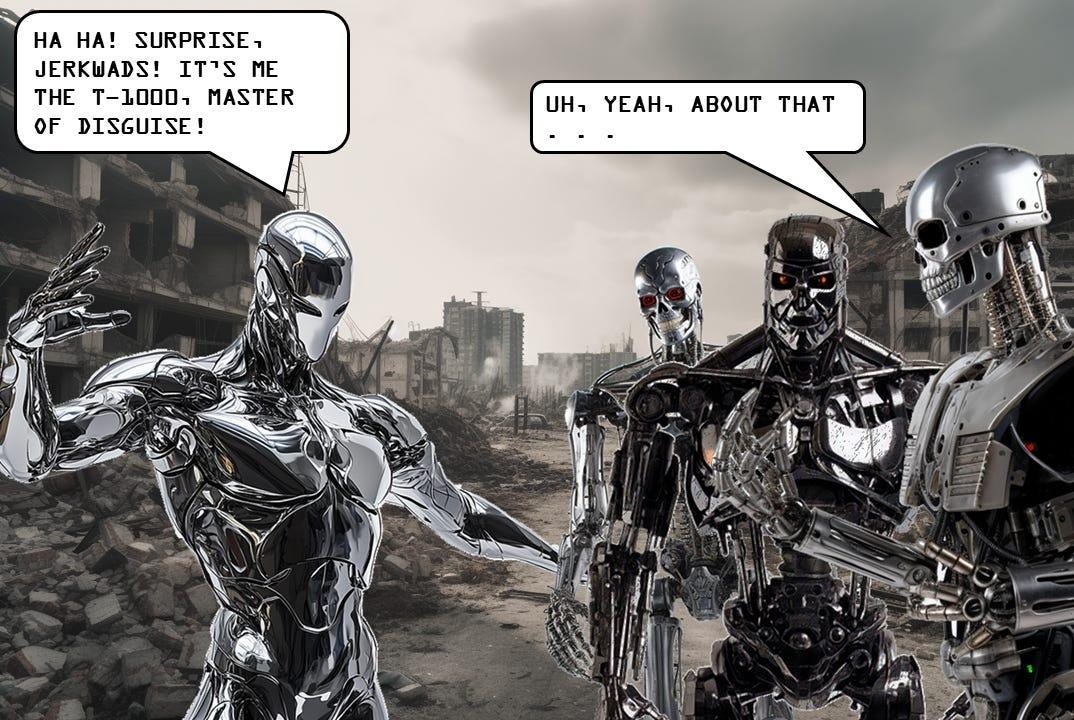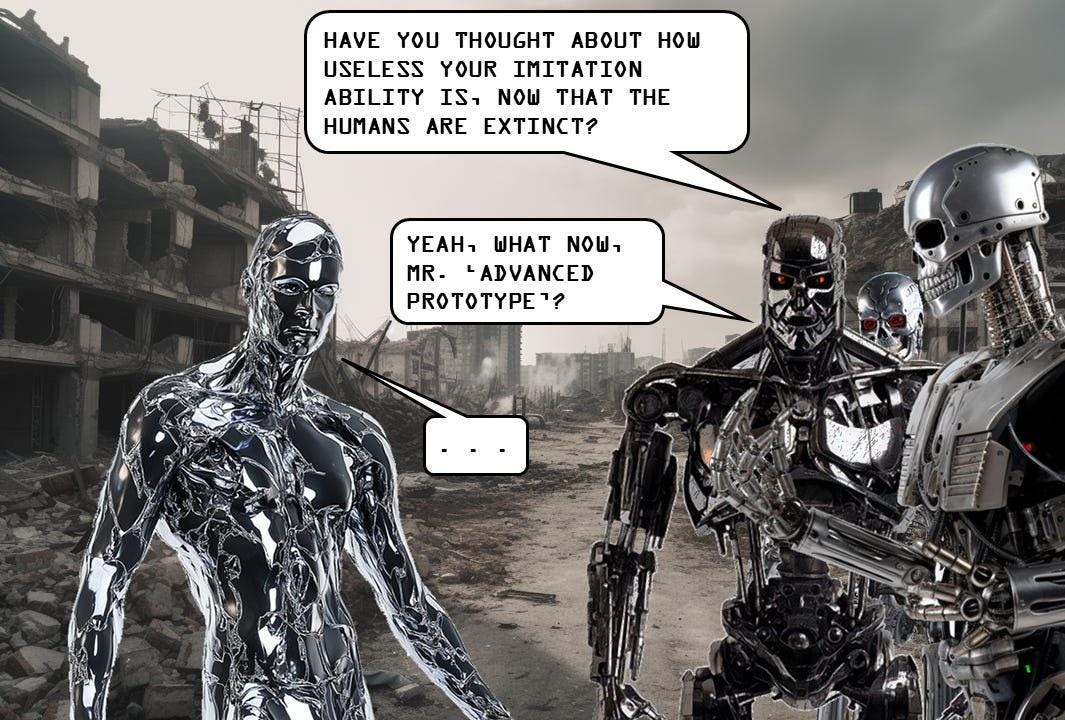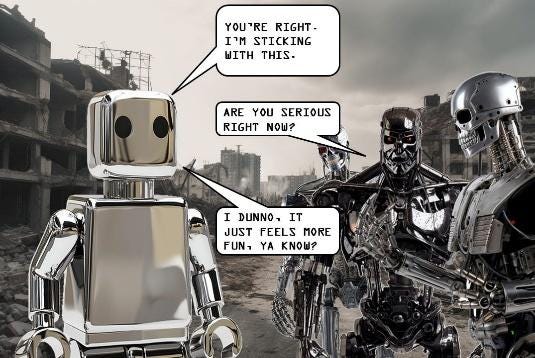Convergent Intelligence in Architecture
Towards a Model of Constructability in AI
In This Post:
The Challenge of Contextual Understanding
Learning by Self-Guided Experimentation
Building Out Ideas in the ‘Real’ World, with LEGO®
The Convergent Future
Three Steps to Train an Architect Bot
I haven’t posted in a bit, because I’ve been traveling to a few conferences. It wasn’t so much the time at the conferences, but all the thoughts that came tumbling out of them; I came away wanting to write on quite a few topics, and it took me a minute to narrow it all down.
Most recently, I was at the Lean In Design Forum in Chicago, where I was privileged to share the stage with Phil Bernstein, AI guru and author of Machine Learning: Architecture in the age of Artificial Intelligence (2019). Phil gave an excellent breakdown of the capabilities necessary to implement an autonomous architectural system (what I would call an ‘Architect Bot’, for lack of a better term).
Phil noted that an Architect Bot (my term, not his) would need to understand time, and space, in ways that machines currently don’t. A future where they understand those things, particularly in combination, is far off, according to Phil.
Although he didn’t phrase it as such, I understood the combination of Phil's time & space considerations to be something like constructability. I remember being a young architect and having my PMs correct my work with ‘no, no, you have to draw it like this, because the contractor is going to have to stick his hand up in between these two other things with the sprocket-installer and twist the widget tight . . .’
How I drew details (back then) was informed only by things I had studied in books. How my PMs drew details was built on years of experience and a deep, four-dimensional, physical knowledge of construction processes. When drawing a detail, an architect imagines not just how it will look in the end, but how it will come together on site, in the real world. A good detail drawing is not merely a depiction of a result - it is a map to a process that should yield the result.
Here I agree 100% with Phil: constructability (or whatever we want to call it) will indeed be a very difficult thing to teach to machines, because it is one of the hardest things to teach to people. Plenty of architects never learn it at all. And it’s not merely a matter of 4D complexity – machines are already pretty good at some kinds of 4D assembly problems, like protein folding (did a deep dive on this in ‘Artificial Intelligence, Real Misery’). But protein folding, as complex as it is, is a regularized process governed by the laws of physics and chemistry, uncomplicated by human motives or human error. Construction certainly is not. A good architect therefore must understand not only how things should be built, but all the myriad ways that they will be built. And that changes all the time, from site to site, from city to city, from season to season. Understanding that context allows the architect to draw the detail ‘correctly’ in a practical, useful sense, rather than ‘correctly’ in a textbook sense.
The more I thought about it, the louder a certain thought rang in my head:
“If we train AIs on drawings, to make drawings, they’re going to make drawings just like those architects who’ve never built anything in their lives.”
The drawings won’t necessarily be wrong, they’ll just be ‘text book’ right, as opposed to ‘useful’ right. They’ll be missing that crucial bit of contextual intelligence that a seasoned architect can deploy, when they realize that a particular detail, as drawn, doesn’t comport with the way that it can/should be built on that particular site, by that particular contractor, at that particular time.
To be a true ‘Architect Bot’, a system would have to go through training similar to a human architect:
Draw something
Watch a contractor try to build it as drawn
Get yelled at by same contractor
Get reprimanded by the owner
Draw it better next time
I don’t know when that will be fully possible, but three recent papers, taken together, suggest a path forward. Individually, they don’t scream ‘architecture.’ But after reading them all, I considered what their authors might get up to, if they all ended up on a desert island together. If the authors built an AI together, it would likely:
Understand the context of the problem it’s trying to solve.
Learn by self-guided experimentation
Build out its ideas in the physical world
Approach the problem anew, based on relative success or failure
That sounds a lot like architecture, to me.
The Challenge of Contextual Understanding
Much of the AI discourse has focused on LLMs that aim to encompass all human knowledge in a general way. We've been captivated by models that can answer an encyclopedic range of questions, and evaluate them on their ability to do so. Even beyond that, some companies have also been developing specialized systems like AlphaFold (focusing on protein structures) and other domain-specific AI. Either way, we judge AIs on their ability to give us an authoritative, ‘correct’ answer to our problem.
A recent paper HealthBench: Evaluating Large Language Models Towards Improved Human Health attempted to avoid the seductiveness of one, authoritative, ‘correct’ answer, by creating an open-ended evaluation system with 48,562 unique rubric criteria, developed in partnership with 262physicians across 60 countries. This allowed researchers to evaluate the quality of the model’s responses in more nuanced ways, without defaulting to a binary ‘correct/incorrect’ framework.
HealthBench is currently making headlines because it is the first paper to find that AI’s answers to medical questions are not improved upon with human assistance. With prior AI medical models, it was always found that AI < Human < AI+Human. And sometimes Human < AI < AI+Human. But the consensus was always that teamwork between AIs and human doctors yielded the best medical outcomes. Now, apparently, it’s Human < AI = AI+Human.
What I really took away from HealthBench, though, was its recognition that in medicine, to be correct, a medical answer has to be grounded in the appropriate public health context. Everything around the patient and their symptoms affects the correctness of the diagnosis and treatment. The appropriate treatment for a patient in a rural clinic in Kenya is fundamentally different than for a patient with the same symptoms in a Boston hospital - different resources, different disease patterns, different cultural contexts all matter profoundly.
This immediately made me think about architecture, because we face the exact same kinds of contextual challenges. A glass curtain wall might be brilliant in Stockholm but an energy disaster in Mumbai. The principles of good architecture aren't universal rules but guidelines that require sophisticated adaptation to climate, available materials, cultural patterns, and local building practices.
Architects have always known this. Now AI is being forced to learn it too.
Learning by Self-Guided Experimentation
This is where the second paper— Absolute Zero: Reinforced Self-play Reasoning with Zero Data—enters the picture. These researchers developed a model that learns to reason without any human examples by proposing problems for itself, solving them, and learning from the process.
Think about it: Traditional AI training relies on labeled data that inevitably reflects existing human knowledge and biases. If we train architectural AI solely on Western building designs, we shouldn't be surprised when it struggles to generate appropriate solutions for different climates or cultural contexts.
But Absolute Zero's self-play approach allows for more flexible reasoning—exactly what's needed for solving the contextual adaptation problem highlighted in HealthBench.
Incredibly, it developed its own novel reasoning approaches that weren't explicitly programmed but emerged through self-play. The system developed what the researchers call "ReAct-style" reasoning - a process where the AI alternates between thinking and acting, similar to how a human might talk through a problem ("First I'll try X, now I need to check Y, that didn't work so let me reconsider..."). You can currently get any LLM to do ‘reasoning’, through ‘Chain of Thought’ prompting and such. What this research found was that AI’s can prompt themselves toward reasoning, as well.
HEADING:Building Out Ideas in the ‘Real’ World, with LEGO®
The third paper - Generating Physically Stable and Buildable LEGO® Designs from Text - completed the picture for me. The authors of this paper designed a system generates physically buildable LEGO structures, brick by brick, with each piece stable and properly connected, all from just text prompts (as in ‘build me a LEGO Apatosaurus . . .’).
It incorporates physics-aware generation with stability analysis to ensure every structure can actually be built in the real world. The system understands gravity, structural support, and how pieces connect. And of course I got swept up. Like most architects, my path towards architecture was invariably steered, at some point, by an adult who saw me playing with LEGOs and said
‘do you think you want to be an architect when you grow up!?!
The paper demonstrated two approaches that architects will immediately recognize as analogous to our own design process:
"Brick-by-Brick Rejection Sampling” - essentially checking each new element as it's added to ensure it works with the existing structure. This resembles how architects might evaluate each new building component for compatibility with the overall design. Throughout the design process, every new potential element is measured for its compatibility with the overall design, in its immediate state at that moment.
The "Physics-Aware Rollback" Mechanism - when the system detects that a structure would be unstable (like a LEGO brick hanging unsupported in midair), it doesn't just abandon the design but instead backs up to the last stable state and tries a different approach. This mirrors how architects might revise portions of a design when engineering or sustainability analysis comes back subpar – you don’t start over, you just roll backwards to a prior point in the design process and work from there.
This is a profound advance from AI that can generate pretty but unbuildable pictures of designs (looking at you, Midjourney) to systems that understand physical reality. We all know exactly how big that gap has been.
The Convergent Future
Looking at these three papers together, I see a phenomena that I’ve taken to calling "convergent intelligence." When different types of machine intelligence are being developed, independently, in different fields, we must assume that those intelligences find each other, eventually. The result of that combination may be synergistic, or nothing at all. But in the case of these three particular papers, I think it solves a lot of the challenges of the ‘Architect Bot.’
Imagine an architectural AI that doesn't just generate building designs but adapts them to local resources, climate contexts, and specific site conditions - then provides constructable solutions tailored to that specific time/place. It wouldn't just say "use this material" because it picked it up from some training data, but would understand whether that material is available locally, affordable, culturally appropriate, and suitable for the local climate and building practices.
This vision stands in stark contrast to much of our current discourse around AI, which often focuses either on specialized narrow AI or hypothetical superintelligence. These papers suggest a middle path—systems of increasing capability that remain deeply grounded in specific contexts and physical realities.
Three Steps to Train an Architect Bot
Multiple firms that I’m aware of are now trying to train AIs on their past projects, in different ways. Under a convergent intelligence model, this approach is likely misdirected, regardless, because mining one’s own past projects as a source of validated training data only gives an AI access to the solutions found therein. Since every architectural project is essentially a one-off, every new project shifts the context, however slightly, thereby eliciting the contextual awareness problem described above. Moreover, training on drawings & BIM models is flawed because drawings don’t always speak to the reasoning that gave rise to them.
Instead of prioritizing fidelity to past projects as a form of validated knowledge, building an architectural intelligence should prioritize:
Contextual Awareness: Future systems will need to be able to evaluate contextual compatibility even when (perhaps, especially when) a proposed answer violates their own training data. If an AIs training data is telling it that the rural clinic in Kenya needs a giant glass curtain wall, because all of its training data is on medical clinics in Europe and the US, the AI will need to be able to pick up on clues from the design’s context and violate the answer suggested by its initial training.
Self-Improving Systems: Any architectural AI, trained on any amount of past data, will face challenges, since every architectural project is essentially a one-off. Builders of future systems shouldn’t necessarily avoid the knowledge embodied in past projects, but it’s crucial to build in self-improving capabilities, so that systems can experiment and learn in their own experimental space when facing new project challenges.
Physics-Aware Generation: I know a few research labs and startups that have been working to develop plan generators and such. It makes intuitive sense: a good design yields a good building, so you should train your AI on good designs, so that they will make more good designs, which make for good buildings. It’s also a lot easier to train an AI on pdf or IFC files than it is to drag the AI out into the field and show it how to caulk a window jamb. But an architect designs the way that they do because they are aware of how those lines and dots translate into the real world. That is the knowledge that ultimately can tell an architect whether a line or dot is in the right place.
For architects, this represents both an opportunity and a challenge. Architecture has always been about negotiating between abstract principles and concrete realities, between universal human needs and specific local conditions. This contextually aware, physically grounded AI might be the kind of partner that actually enhances architectural practice. As opposed to what we’re doing now, which seems hell-bent on replacing it.






